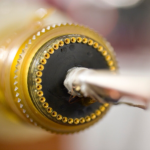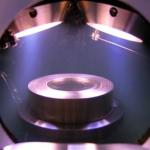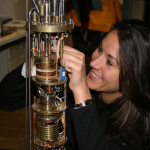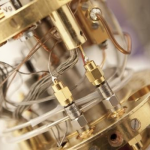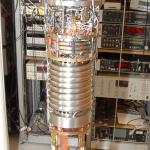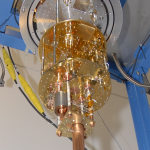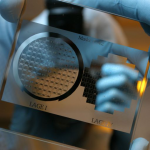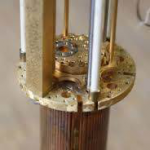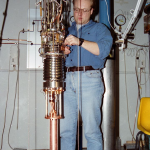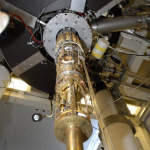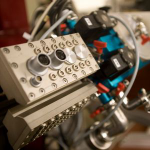Administration of EMP-related Publications
| year | 2020 |
| author(s) | D. Cattiaux, X. Zhou, S. Kumar, I. Golokolenov, R. R. Gazizulin, A. Luck, L. Mercier de Lépinay, M. Sillanpää, A. D. Armour, A. Fefferman, and E. Collin |
| title | Beyond linear coupling in microwave optomechanics |
| document type | Paper |
| source | Phys Rev Research 2, 033480 (2020) |
| doi | 10.1103/PhysRevResearch.2.033480 |
| arxiv | https://arxiv.org/abs/2003.03176 |
| EMP/Horizon2020 | This publication includes a EMP/Horizon2020 acknowledgement. |
| abstract | We explore the nonlinear dynamics of a cavity optomechanical system. Our realization consisting of a drumhead nanoelectromechanical resonator (NEMS) coupled to a microwave cavity allows for a nearly ideal platform to study the nonlinearities arising purely due to radiation-pressure physics. Experiments are performed under a strong microwave Stokes pumping which triggers mechanical self-sustained oscillations. We analyze the results in the framework of an extended nonlinear optomechanical theory and demonstrate that quadratic and cubic coupling terms in the opto-mechanical Hamiltonian have to be considered. Quantitative agreement with the measurements is obtained considering only genuine geometrical nonlinearities: no thermo-optical instabilities are observed, in contrast with laser-driven systems. Based on these results, we describe a method to quantify nonlinear properties of microwave optomechanical devices. Such a technique, now available in the quantum electromechanics toolbox, but completely generic, is mandatory for the development of schemes where higher-order coupling terms are proposed as a resource, like quantum nondemolition measurements or in the search for new fundamental quantum signatures, like quantum gravity. We also find that the motion imprints a wide comb of extremely narrow peaks in the microwave output field, which could also be exploited in specific microwave-based measurements, potentially limited only by the quantum noise of the optical and the mechanical fields for a ground-state-cooled NEMS device. |

